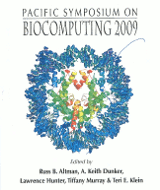Unraveling Dynamic Activities of Autocrine Pathways that Control Drug-Response Transcriptome Networks
Yoshinori Tamada1, Hiromitsu Araki2, Seiya Imoto1, Masao Nagasaki1, Atsushi Doi2, Yukiko Nakanishi2, Yuki Tomiyasu2, Kaori Yasuda2, Ben Dunmore3, Deborah Sanders3, Sally Humphreys3, Cristin Print4 D. Stephen Charnock-Jones3, Kousuke Tashiro5, Satoru Kuhara5, and Satoru Miyano1
1Human Genome Center, Institute of Medical Science, The University of Tokyo, 4-6-1 Shirokanedai, Minato-ku Tokyo, 108-8639, Japan; 2Systems Pharmacology Research Institute, GNI Ltd., 3-8-33 Momochihama, Sawaraku-ku, Fukuoka, 814-0011, Japan; 3Department of Obstetrics & Gynaecology, University of Cambridge, The Rosie Hospital, Robinson Way, Cambridge CB2 2SW, United Kingdom; 4Department of Molecular Medicine & Pathology, School of Medical Sciences, The University of Auckland, Private Bag 92019, Auckland, New Zealand; 5 Graduate School of Genetic Resources Technology, Kyushu University, 6-10-1, Hakozaki, Higashi-ku, Fukuoka, 812-8581, Japan
Email: tamada@ims.u-tokyo.ac.jp
Pacific Symposium on Biocomputing 14:251-263(2009)

Abstract
Some drugs affect secretion of secreted proteins (e.g. cytokines) released from target cells, but it remains unclear whether these proteins act in an autocrine manner and directly effect the cells on which the drugs act. In this study, we propose a computational method for testing a biological hypothesis: there exist autocrine signaling pathways that are dynamically regulated by drug response transcriptome networks and control them simultaneously. If such pathways are identified, they could be useful for revealing drug mode-of-action and identifying novel drug targets. By the node-set separation method proposed, dynamic structural changes can be embedded in transcriptome networks that enable us to find master-regulator genes or critical paths at each observed time. We then combine the protein-protein interaction network with the estimated dynamic transcriptome network to discover drug- affected autocrine pathways if they exist. The statistical significance (p-values) of the pathways are evaluated by the meta-analysis technique. The dynamics of the interactions between the transcriptome networks and the signaling pathways will be shown in this framework. We illustrate our strategy by an application using anti-hyperlipidemia drug, Fenofibrate. From over one million protein-protein interaction pathways, we extracted significant 23 autocrine-like pathways with the Bonferroni correction, including VEGF-NRP1-GIPC1-PRKCA-PPARα, that is one of the most significant ones and contains PPARα, a target of Fenofibrate.
[Full-Text PDF] [PSB Home Page]